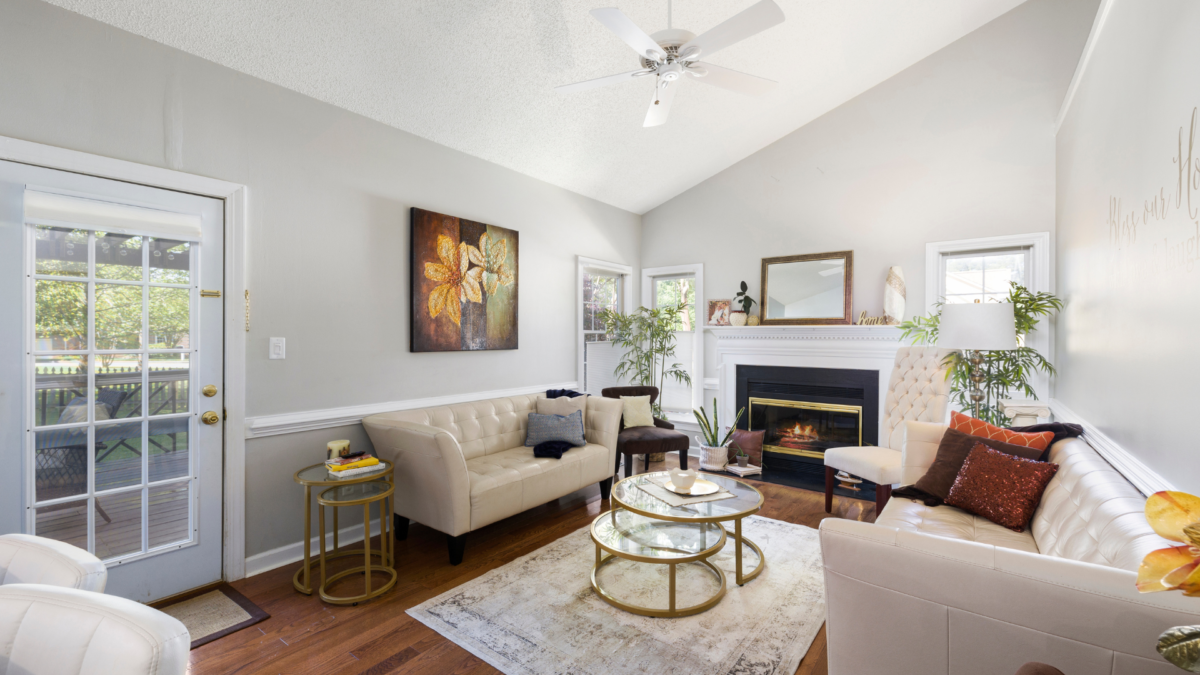In the realm of modern interior design, the creative juxtaposition of materials has become a hallmark of contemporary aesthetics. The days of adhering to a single style or uniform look are behind us. Today, interior designers and homeowners alike are embracing the beauty and charm of mixing materials to create spaces that are visually captivating and emotionally resonant. This artful practice not only adds depth and character to your living spaces but also reflects the complexity and diversity of our world.
However, while the selection of materials undoubtedly shapes the visual appeal of a space, the execution of construction plays an equally crucial role. From the foundation to the finishing touches, every aspect of construction contributes to the overall quality and longevity of the design. One essential consideration is the integration of practical elements alongside aesthetic choices. For instance, you can consider Tile Backer Boards to go over the top of underfloor heating, which can provide a sturdy and heat-conductive surface for tiling, ensuring both durability and efficient heat distribution.
That said, let’s dive into the world of mixing materials and explore how you can master this art in your home.
Balancing Act: The Core Principles
Before embarking on your material-mixing journey, it’s crucial to understand the core principles that guide this art. Balancing contrasting textures, colors, and finishes is key. Start by identifying a primary material that will serve as the anchor for your design. It could be something as versatile as wood, which provides warmth and grounding. Then, layer in secondary materials that complement and contrast with the primary one. For instance, contemporary doors made of sleek iron and glass can provide a modern contrast to the organic feel of wood. Similarly, incorporating iron elements can add an industrial touch that enhances the overall aesthetic.
Exploring Texture Symphony
Texture plays a pivotal role in material mixing. Imagine the tactile experience of running your fingers over a smooth marble countertop, juxtaposed against the roughness of exposed brick walls. Such contrasts create an engaging sensory experience, bringing your space to life. Experiment with materials like leather, concrete, velvet, and metals to introduce a multi-dimensional texture symphony into your home. For instance, as you explore the range of Luxury Bathrooms from Nicholas Anthony or similar companies, strive to find an ideal balance between luxurious finishes and practical textures. Incorporating elements such as polished chrome fixtures, plush towels, and glossy tiles can add a touch of opulence to your bathroom while maintaining a functional and comfortable ambiance. The idea here is to satisfy your tactile sensations to enhance the overall ambiance of your living spaces.
Storytelling Through Design
Every material carries its own story, from the origins of its creation to the journey it has taken to become part of your living space. By thoughtfully curating a blend of materials, you have the opportunity to weave a personal narrative that reflects your values, experiences, and aspirations. Perhaps you incorporate reclaimed wood from an old barn, celebrating the beauty of repurposed materials and honoring the past. Or you might combine handcrafted ceramic tiles with sleek stainless steel, merging artisanal craftsmanship with modern innovation. Each material choice becomes a chapter in the tale of your home, inviting guests to explore and appreciate the depths of your design vision.
Sustainability in Material Mixing: Blending Eco-Friendly Elements
In today’s world, being mindful of the environment is important. So, when building a home with the assistance of one of the best builders in las vegas (or wherever you live), consider using eco-friendly materials like bamboo, cork, or recycled glass. These materials not only help reduce your environmental impact but also add unique textures to your space. Look for locally sourced materials or those made by artisans who prioritize ethical production. Mixing these sustainable elements with traditional materials creates a stylish and environmentally friendly home.
Embracing the Unconventional
While the principles of balance and harmony guide the art of mixing materials, true creativity often lies in embracing the unconventional. Don’t be afraid to push boundaries and experiment with unexpected pairings that challenge traditional design norms. Consider combining raw, industrial elements like exposed concrete or rusted metal with luxurious finishes like plush velvet or silk. This daring juxtaposition can create a striking visual tension that captivates the senses and sparks conversation.
Integrating Aquatic Elements
In today’s home designs, adding water features like pools or lawn fountains can bring a calm and cool vibe to the mix of different materials. If you’re thinking about adding a pool, you can search online for “pool builders near me” to find pros who can install it for you. Whether you go for a sleek, modern pool or one that feels more natural, the water’s surface can reflect the colors and textures around it, making everything look even better. The same goes for a lawn fountain. Adding one to your garden can not only make it look pretty but can also give birds a spot to drink. By thinking about how the pool fits into the whole look of your yard, you can make an outdoor space that feels peaceful and welcoming, like your own little getaway in nature.
Color Choreography
Colors hold the power to evoke emotions and set the tone for your interior. The palette you choose when mixing materials should reflect your personal style while maintaining a harmonious balance. The 60-30-10 rule is a timeless guide: 60% primary color, 30% secondary color, and 10% accent color. Apply this principle to your materials. For instance, if you have concrete floors (60%), wooden furniture (30%), consider adding vibrant upholstery or artworks (10%) to inject personality.
Uniting Timelessness with Trends
Mixing materials in design offers timeless appeal. While trends may change, a well-blended mix of materials endures. Adding a touch of contemporary design can enhance the overall composition. For instance, combining sleek glass and metal with rustic elements, or integrating organic materials into a minimalist setting. This fusion brings together tradition and innovation, creating a narrative that resonates over time. Furthermore, adding a fine touch to the overall view can elevate the outlook, making it timeless. To achieve this, consider working with a reputable company that provides home interior as well as exterior visualization services. This will give you a clear idea of the result before implementing it, ensuring a cohesive and appealing design.
The Magic of Focal Points
Focal points draw the eye and define the narrative of a room. They can be created by highlighting specific materials in strategic locations. Picture an open-concept living area with a striking stone fireplace as the focal point, surrounded by glass panels and metal railings. This arrangement seamlessly marries contrasting materials and draws attention to the heart of the room. Contemporary doors with iron detailing can also serve as unique focal points, adding visual interest to transitional spaces.
Mastering Scale and Proportion
When mixing materials, it’s crucial to consider scale and proportion. A large, ornate chandelier may overwhelm a room with minimalistic furniture, while petite pendant lights might get lost in a spacious, grand setting. Achieving balance involves understanding the visual weight of different materials and objects. The interplay of scale ensures that each material gets its moment to shine while contributing to the overall composition.
Personal Touch: Custom Creations
One of the most rewarding aspects of blending materials is the opportunity to create custom pieces that reflect your individuality. Collaborate with artisans and craftsmen to design bespoke furniture, lighting fixtures, and décor items. Picture a dining table crafted from reclaimed wood and iron- an homage to both nature’s beauty and human ingenuity. You can also collaborate with firms like Lovech to create custom CNC-cut decorative panels, adding a unique touch to your kitchen spaces and a distinctive sense of modern elegance. By incorporating such unique elements, you transform your living spaces into a harmonious blend of craftsmanship, innovation, and your own individual style. These custom creations not only infuse your space with character but also celebrate the rich interplay of materials.
These custom creations not only infuse your space with character but also celebrate the rich interplay of materials.
Conclusion
The art of mixing materials in contemporary home design is a journey of self-expression, creativity, and balance. It’s about intertwining textures, colors, and finishes to tell a unique story that transcends time and style. From the inviting touch of leather to the sleek allure of metal, every material you choose adds a layer of depth and intrigue to your living spaces. So, embrace the artful fusion, and let your home become a canvas where materials dance in harmony. Remember, it’s not about adhering to rules but about crafting an authentic narrative that resonates with your soul.

